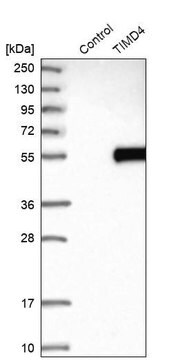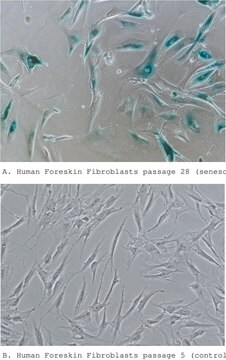MABC958
Anti-TIM4/TIMD-4 Antibody, clone Kat5-18
clone Kat5-18, from hamster(Armenian)
Synonym(s):
T-cell immunoglobulin and mucin domain-containing protein 4, TIMD-4, Spleen, mucin-containing, knockout of lymphotoxin protein, SMUCKLER, T-cell immunoglobulin mucin receptor 4, TIM-4, T-cell membrane protein 4, TIM4/TIMD-4
About This Item
Recommended Products
biological source
hamster (Armenian)
Quality Level
antibody form
purified immunoglobulin
antibody product type
primary antibodies
clone
Kat5-18, monoclonal
species reactivity
mouse
technique(s)
flow cytometry: suitable
neutralization: suitable
isotype
IgG
NCBI accession no.
UniProt accession no.
shipped in
dry ice
target post-translational modification
unmodified
Gene Information
mouse ... Timd4(276891)
Related Categories
General description
Immunogen
Application
Flow Cytometry Analysis: Representative lots were conjugated with biotin and detected Tim4 immunoreactivity among mouse Mac1+ peritoneal cells (Miyanishi, M., et al. (2012). Int. Immunol. 24(9):551-559; Miyanishi, M., et al. (2007). Nature. 450(7168):435-439).
Neutralizing Analysis: A representative lot blocked Tim4-mediated engulfment of apoptotic CAD-/- thymocytes by murine peritoneal macrophages in a dose-dependent manner in culture (Miyanishi, M., et al. (2007). Nature. 450(7168):435-439).
Neutralizing Analysis: A representative lot, when administered via i.v. injection, significantly suppressed the phagocytosis activity of F40/80+ macrophages in the thymus of CAD-/- mice following intraperitoneal dexamethasone injection to induce apoptosis in the thymus (Miyanishi, M., et al. (2007). Nature. 450(7168):435-439).
Apoptosis & Cancer
Apoptosis - Additional
Quality
Flow Cytometry Analysis: 0.1 µg of this antibody detected TIM4/TIMD-4 in Ba/F3-Tim4 cells overexpressing mouse Tim4.
Target description
Physical form
Storage and Stability
Handling Recommendations: Upon receipt and prior to removing the cap, centrifuge the vial and gently mix the solution. Aliquot into microcentrifuge tubes and store at -20°C. Avoid repeated freeze/thaw cycles, which may damage IgG and affect product performance.
Other Notes
Disclaimer
Not finding the right product?
Try our Product Selector Tool.
Storage Class Code
12 - Non Combustible Liquids
WGK
WGK 2
Flash Point(F)
Not applicable
Flash Point(C)
Not applicable
Certificates of Analysis (COA)
Search for Certificates of Analysis (COA) by entering the products Lot/Batch Number. Lot and Batch Numbers can be found on a product’s label following the words ‘Lot’ or ‘Batch’.
Already Own This Product?
Find documentation for the products that you have recently purchased in the Document Library.
Our team of scientists has experience in all areas of research including Life Science, Material Science, Chemical Synthesis, Chromatography, Analytical and many others.
Contact Technical Service








